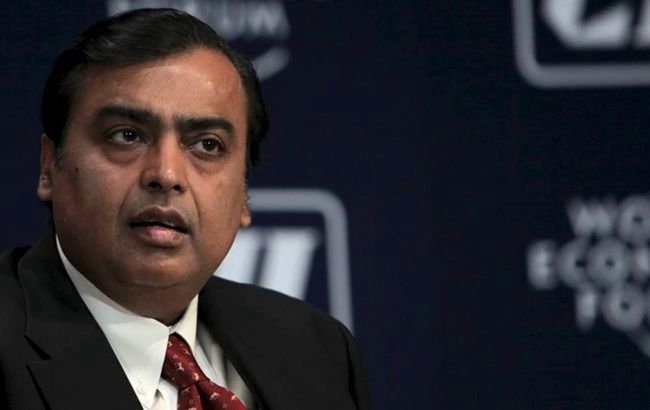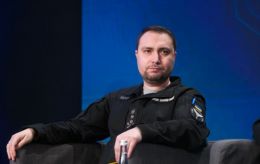How Asia’s richest entrepreneur manages to operate in Europe despite backing Russia
 What allows Mukesh Ambani to continue doing business in Europe despite his support for Russia? (photo: GettyImages)
What allows Mukesh Ambani to continue doing business in Europe despite his support for Russia? (photo: GettyImages)
Mukesh Ambani, the wealthiest entrepreneur in Asia and the owner of Reliance Industries. Despite assisting Russia in circumventing sanctions, his business for a long time had access to the European financial system and tax benefits. More details — in the RBC-Ukraine article.
Read more in the RBC-Ukraine material.
Mukesh Ambani is an Indian businessman with a fortune estimated at nearly $103 billion, whom the media link to one of the largest schemes for circumventing sanctions against Russia.
According to The New York Times, Reliance Industries, owned by the Indian billionaire, processes more than 30% of all Russian oil imported into India.
Thus, Ambani’s business effectively helps provide the Kremlin with billions of dollars to continue the war in Ukraine.
Important Connections
In the course of verifying details about Ambani’s activities, the editorial team drew attention to the company Jio Estonia OÜ. According to documents, Jio Estonia OÜ, which is 100% owned by Ambani’s structures, was registered in the Estonian jurisdiction in 2018 (No. 18/SF/3099). On behalf of Ambani, “under a power of attorney,” Taavi Kotka acted. According to official registers, Jio Estonia OÜ continues to operate.
Taavi Kotka is a well-known public figure in Estonia: a former adviser to the European Commission and currently the Chairman of the e-Residency programme Council. At the same time, he simultaneously holds the positions of digital adviser to Mukesh Ambani and the main beneficiary of Jio Estonia OÜ, which in turn serves as a research centre for Reliance Jio, a company that is also part of the Reliance Industries structure.
Thus, since 2018, Kotka has simultaneously participated in Estonia’s state digital initiatives and in a business structure whose ultimate beneficiary is Mukesh Ambani. This raises questions about a potential conflict of interest.
Mukesh Ambani himself received the status of Estonia’s government e-Residency programme in 2019, which remained valid until 2021.
Following the publication of this article, Anita Preinvalts, an e-Residency expert with the Estonian Police and Border Guard Board, confirmed in a comment to RBC-Ukraine that “Mukesh Ambani’s e-resident card indeed expired in March 2021.”
The RBC-Ukraine editorial team also sent a request to Mr. Kotka asking for comment on the situation, but has not yet received a response.
Ambani’s Role in the Kremlin’s financial flows
Mukesh Ambani’s activities may have contributed to prolonging the current war.
The businessman expanded cooperation with the Kremlin at a time when Russia’s economy was under significant pressure. In the second half of 2022, the occupiers were pushed across the Dnipro from Kherson, and Ukraine’s Armed Forces almost completely cleared the Kharkiv region of Russian troops.
Sanctions imposed by Western countries delivered a serious blow to the key production capacities of Russia’s defense industry. And if not for Ambani’s actions, Russia would have suffered a much deeper economic downturn, making it more difficult to sustain the war effort.
According to Bloomberg analysts, in the winter of 2022–2023, the Russian economy was on the verge of collapse.
And it was precisely at this critical moment that the "lifeline" scheme for the Kremlin came into play.
At first glance, it looked highly dubious. However, by 2023, about forty previously unknown trading companies from the Persian Gulf and Hong Kong — "literally created out of thin air" — had managed to take control of more than half of Russia’s oil exports.
Mukesh Ambani’s connections and influence in international financial circles, could have helped ensure the uninterrupted functioning of this mechanism.
The effect became visible by mid-2023. The financial inflows enabled Russia not only to recover but to significantly expand its military capabilities.
Billions for Russia’s military-industrial complex
According to Russia’s Ministry of Defense, in 2023, the Russian army received more than 1,500 tanks and 22,000 drones. Such rapid growth was likely made possible thanks to the financing of Russia’s defense industry through this scheme.
The total output included more than 2,200 units of armored combat vehicles, 1,400 missile and artillery systems, and over 12,000 vehicles.
Notably, impressive results were achieved in missile production. If at the beginning of 2023 Russia was producing only six Iskander ballistic missiles per month with a stockpile of 50 units, by early 2024 the reserves of 9M723 and 9M727 missiles had grown to nearly 200, despite their intensive use since the summer of 2023.
According to Ukraine’s Commander-in-Chief Oleksandr Syrskyi, the number of Russian tanks doubled since 2022 — from 1,700 to 3,500. The number of artillery systems tripled, while the number of infantry fighting vehicles on the battlefield increased from 4,500 to 8,900.
A study by the Jamestown Foundation showed that Russia’s industrial production index from January to September 2024 rose by 104.4% compared to the same period in 2023.
At the same time, international logistics routes were activated. According to CNN, by May 2023, an extensive network of Caspian Sea shipping routes was already functioning.
By September, Kyiv reported that Russia had used more than 8,000 Iranian drones. Reuters recorded Tehran supplying about 400 ballistic missiles, including new Fateh-110 tactical systems with a range of up to 700 kilometers.
Deliveries of artillery shells from North Korea reached 5 million units — double Russia’s annual production capacity. China provided critically important technologies and components for high-tech weapons worth billions of dollars.
India’s exports to Russia included $4 billion worth of military equipment, $1.4 billion in spare parts for armored vehicles, $518 million worth of medical supplies for the army, and around $500 million in chemical reagents for explosives production.
Russia’s military-industrial complex shows no signs of slowing down. Funding is not a problem: the Russian oil resale scheme still works successfully.
The price difference per barrel, derived from a relatively small markup, ends up in the accounts of foreign companies linked to Putin’s regime. The massive scale of Russian oil exports brings the Kremlin billions of dollars annually.
Part of the funds, thanks to Ambani’s business structure, passes through intermediaries in Hong Kong and the Gulf countries, whose operations are not subject to international sanctions. These financial flows can then be used to purchase Western microchips, high-tech equipment, and essential components for weaponry.
This technological retooling, made possible through the scheme, has significantly boosted the Russian army’s potential.
By the start of Ukraine’s counteroffensive in summer 2023, the country was no longer facing the demoralized troops of 2022 armed with outdated T-62s, but an enemy equipped with modern technology and unlimited funding.
Thus, the key task today is clear: the Kremlin’s financial flows must be cut off. And the first step must be the dismantling of "Ambani’s scheme."
This can only be solved through political means. There must be consideration of limiting the business activities of the Indian tycoon in countries that support Ukraine’s fight for independence.
Meanwhile, financial flows continue to replenish Russia’s treasury, providing the Kremlin with resources to wage war. This allows Russia to press its demands for the annexation of Ukrainian territories and adapt to Western economic sanctions.
Updated.
After the publication of this article, the editorial office of RBC-Ukraine received official letters from Estonian state institutions and their representatives. The letters pointed out the inaccuracy of information regarding Ambani allegedly still holding the status of an e-resident of Estonia. We were also officially informed that Ambani currently does not derive any benefits from his long-expired status. The editorial team made the necessary changes to the article, despite the fact that similar information had previously appeared in a number of international media outlets.

